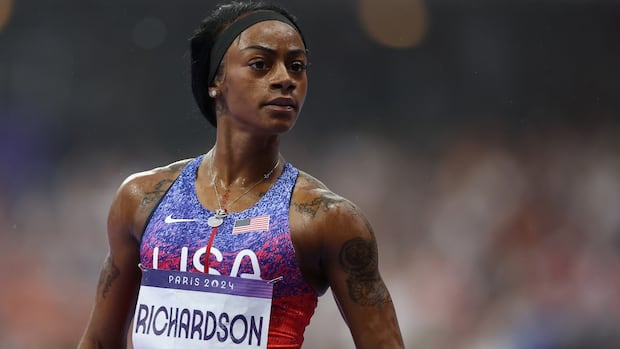[published_date]
Ottawa will favour the pitch that creates the most Canadian jobs when it decides whether to award a contract for a dozen new submarines to a German or a South Korean consortium, the government’s point person for military procurement says.
The comments from Liberal MP Stephen Fuhr highlight the Carney government’s attempts to build up the Canadian industrial base while ramping up defence spending to levels unprecedented in recent history.
Ottawa is hoping that money will protect jobs at home — especially in sectors such as steel and aluminum that have been hit by American tariffs — and create new ones.
Fuhr said both submarine proposals have been green-lit by the Royal Canadian Navy, and that the choice will come down to cost, delivery schedule and, crucially, the foreign companies’ respective plans for a domestic windfall.
“They meet the military requirements,” said Fuhr, secretary of state for defence procurement, in an interview.
Now, Fuhr said they must compete to provide “the best economic outcomes for Canada.”
The former CF-18 pilot said it is “very, very important that we make sure that we stimulate our economy when we spend this enormous amount of money in defence.”
Prime Minister Mark Carney announced in August that the government would pick between Germany’s ThyssenKrupp Marine Systems and South Korea’s Hanwha Ocean Ltd. for the submarine contract, which is expected to be worth more than $20 billion.
New vessels are expected to start arriving in Canada in the mid-2030s, with the choice of the winning bidder set to influence Canada’s military and industrial alliances in Europe or Asia for decades.
Military spending boost
Carney has promised to meet NATO’s defence spending target of two per cent of GDP this year with a $9-billion boost to the Canadian Armed Forces (CAF).
By 2035, the NATO benchmark will increase to five per cent of GDP — 3.5 per cent direct military investment and 1.5 per cent in defence infrastructure.
Fuhr said his focus on economic benefits will continue with other major military acquisitions, such as munitions, surveillance airplanes, drones, artillery and ships for the navy and coast guard.
Those benefits could come in the form of manufacturing or assembling jobs in Canada, or getting the winning bidders to invest in civilian production in the country.
He said Ottawa wants to be “less reliant on our southern neighbour” in the context of a realignment of alliances.
“I have to make sure the CAF gets what it needs to do the jobs that the government asks them to do. I have to stimulate the Canadian economy in a way that it just really hasn’t been stimulated before in decades and decades,” Fuhr said.
Procurement bottleneck
The hundreds of billions in promised military spending over the coming years comes with a centralized procurement process. The task is currently the shared responsibility of several departments: National Defence, Public Services and Procurement, Innovation and the Treasury Board.
Critics argue this system bogs down projects with competing demands from different departments and agencies, and has an embedded aversion to risk that leads to constant delays.
“We need to recognize that there is not always a perfect solution to our needs and that we can’t totally eliminate all risks during a procurement,” said Gaëlle Rivard Piché, executive director of the Conference of Defence Associations.
Fuhr said the current system is “just not capable” of acting at the “speed and magnitude” that the government envisions.
He said details on a new defence procurement agency will start rolling out in a few weeks, with a new defence industrial policy established by the end of the year.

Fuhr is at the centre of a lobbying frenzy, having met with officials from over 40 companies and interest groups in recent months and touring facilities across the country.
“There are lots of contracts to be awarded in the coming months and years, so it’s important for companies to position themselves now in order to showcase what they have to offer,” said lobbyist Hugues Théorêt of the Sandstone Group.
“There is a lot of interest and buzz around the defence sector.”
Competing subs
Both the Koreans and the Germans pledge to build sub maintenance facilities in Canada, but much depends on the direction of the federal government, they said.
The consortiums said Canadian maintenance facilities would be separate from the purchase of the boats and would require additional investment on the part of the federal government.

The two submarine proposals are significantly different. The South Korean KSS-III, pitched through a partnership between Hanwha Ocean and Hyundai Heavy Industries, is bigger than its German-Norwegian rival.
It displaces about 3,600 tonnes, while the Type 212CD proposed by ThyssenKrupp Marine Systems is 2,800 tonnes in size.
Both the KS-III and the Type 212CD are diesel-electric attack submarines, capable of firing torpedoes and submarine-launched ballistic missiles.

Rather than relying on traditional lead-acid batteries, both boats draw their power from lithium batteries, which allow for greater cruising speed and longer submerged times. Both proposals claim their boats can remain submerged for three weeks or more — a key requirement for operations in Canada’s Arctic.
The approximate cost of the South Korean proposal is $20 billion to $24 billion for 12 submarines, according to Hanwha officials who spoke to CBC News last spring. The cost of the German-Norwegian proposal is unknown.
The Koreans are offering to deliver four submarines by 2035, when the Royal Canadian Navy expects to begin retiring the current Victoria-class boats. The Germans say there’s the possibility one Type 212CD would be ready for Canada within that timeframe.



